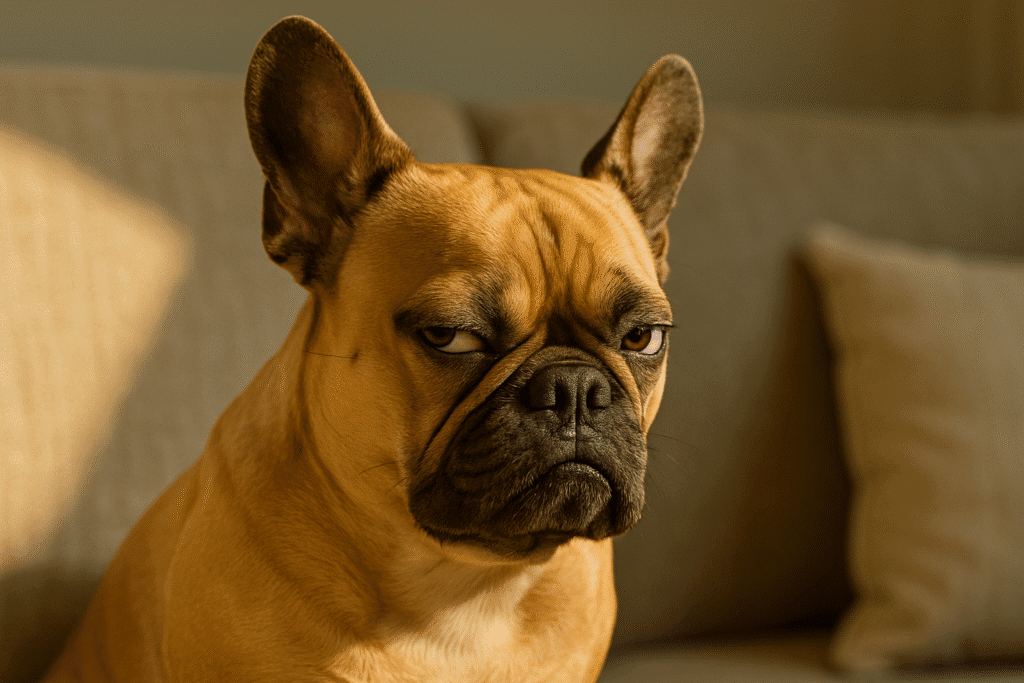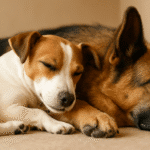Dog Side-Eye: The Ultimate Guide to Your Pup’s Sassy Expressions

In the rich and often hilarious tapestry of dog body language, there is one expression that stands supreme in its ability to convey pure, unadulterated attitude: the side-eye. It’s that subtle turn of the head, that deliberate glance from the corner of the eye that can make a pet owner feel seen, judged, and thoroughly amused all at once. If you’re a dog owner, you’ve undoubtedly been on the receiving end of this look, a silent testament to your dog’s complex emotional world.
But what is your dog really trying to communicate? Is it simple sass, a fleeting moment of annoyance, or something deeper? Welcome to the ultimate guide to understanding the dog side-eye. We’re going to dive deep into the nuances of this classic canine expression, exploring everything from the hilariously petty to the critically important signs of stress. By the end of this, you won’t just see the side-eye; you’ll understand its language.
The Anatomy of the Side-Eye: More Than Just a Look
At its core, the dog side-eye involves a dog turning its head slightly away while keeping its gaze fixed on a point of interest. This action exposes the white part of the eye, the sclera, often in a distinct crescent shape. In clinical terms, this is often referred to as “whale eye.” However, context is everything. The term “whale eye” is most accurately used when the dog is feeling stressed, anxious, or threatened. The muscles in their face will be tense, their body will be rigid, and they may exhibit other calming signals like lip licking or yawning.
But our clever canines have co-opted this physiological response for their own, more dramatic purposes. When your dog is relaxed, comfortable, and safe in their environment, the side-eye transforms. It becomes a tool of expression, a way to communicate mild disapproval, jealousy, or playful indignation. This is the “sassy side-eye,” and it’s a cornerstone of the pettypups persona we know and love.
Decoding the Drama: Top 7 Reasons for the Petty Side-Eye
To truly master understanding your dog, you need to recognize the common triggers for their theatrical behavior. While every dog is an individual, these scenarios are almost universally guaranteed to earn you a judgmental glance.
1. The Great Snack Injustice
This is perhaps the most common side-eye catalyst. You open a crinkly bag, you peel a banana, you dare to make a sandwich for yourself and yourself alone. From across the room, you feel it: the intense, unwavering stare. When you finally look over, they hit you with the side-eye. It’s a multi-layered message: “I see you. I smell that. I cannot believe you would betray our bond like this. I will remember this.”
2. The Abrupt End to a Good Time
The walk was glorious, the dog park was a whirlwind of fun, the belly rub was divine. And then, you stopped. The transition from pure bliss to mundane reality is a shock to your dog’s system, and they will express their disappointment with a long, lingering side-eye as you, the fun-thief, put the leash away or, heaven forbid, go back to typing on your computer.
3. Invasion of Personal Space and Slumber
A sleeping dog is not just a sleeping dog; it’s a king resting upon his throne. Whether that throne is a plush dog bed, your favorite armchair, or the exact center of your own bed, it is their sacred space. Daring to move them, nudge them, or even sit too close can result in a sleepy, slow-motion side-eye that says, “My disappointment is immeasurable, and my day is ruined.”
4. The Unapproved Social Interaction
You are their human. Their one and only. How dare you dispense affection to another canine? Petting another dog in their presence is a cardinal sin. The side-eye you receive will be sharp, cold, and immediate. It’s often delivered over their shoulder as they pointedly walk away from you, a clear signal of their deep sense of betrayal.
5. Questionable Command Decisions
You ask them to “sit” when they are clearly comfortable. You tell them to “drop it” when “it” is the most fascinating stick they have ever discovered. This blatant disregard for their own well-thought-out plans will often be met with a moment of defiant stillness, followed by a side-eye that asks, “And who are you to disrupt my very important business?”
6. The Bath-Time Betrayal
The word “bath” alone can trigger it. As you gather the towels, the side-eye begins. It follows you to the bathroom, a silent, mournful protest. It’s a look that says, “I trusted you. I loved you. And this is how you repay me?”
7. The Introduction of an Unwanted Sibling (Furry or Otherwise)
Bringing a new pet or even a new baby into the home can be a major source of side-eye. This look is a complex cocktail of emotions: curiosity, jealousy, and deep suspicion. It’s your dog’s way of saying, “I see this new small creature. I am monitoring the situation. I am re-evaluating our relationship based on current treat distribution.”
Beyond the Sass: When to Pay Closer Attention
While we’ve had fun exploring the humorous side of funny dog behavior, it is crucial for every responsible pet owner to know when the side-eye, or “whale eye,” is a genuine cry for help. Recognizing the signs of fear, anxiety, or stress can prevent negative experiences and potential aggression.
Pay close attention if the side-eye is paired with any of the following:
- A stiff or frozen body: The dog becomes completely still.
- Lip licking or nose licking: A common signal that the dog is uncomfortable.
- Yawning when not tired: A way for dogs to displace anxiety.
- A tucked tail: A clear sign of fear or submission.
- Lowered head or body: The dog tries to make itself smaller.
- Panting without exertion: Heavy breathing when it’s not hot and they haven’t been exercising.
If you see these signs, it’s time to intervene. The source of the stress could be another dog, a person (especially a child who doesn’t know how to interact gently), a loud noise, or a situation they find overwhelming. Your job is to calmly remove them from the situation and provide them with a sense of security. Never punish a dog for displaying these signs; they are communicating their discomfort in the only way they know how.
Conclusion: A Window to Your Dog’s Soul
The dog side-eye, in all its forms, is a beautiful and intimate part of your relationship with your pet. It’s a testament to the fact that they are not just animals, but beings with rich emotional lives, distinct personalities, and yes, a flair for the dramatic. Learning to read that look—to distinguish the playful pout from the worried plea—deepens your bond and makes you a better, more attuned pet owner.
So, the next time your furry friend throws you that look from across the room, appreciate it. Whether they’re complaining about the quality of their dinner or judging your taste in television, it’s a conversation. It’s a moment of connection. Embrace the sass, respect the stress, and cherish every single expressive, petty, and loving glance.





